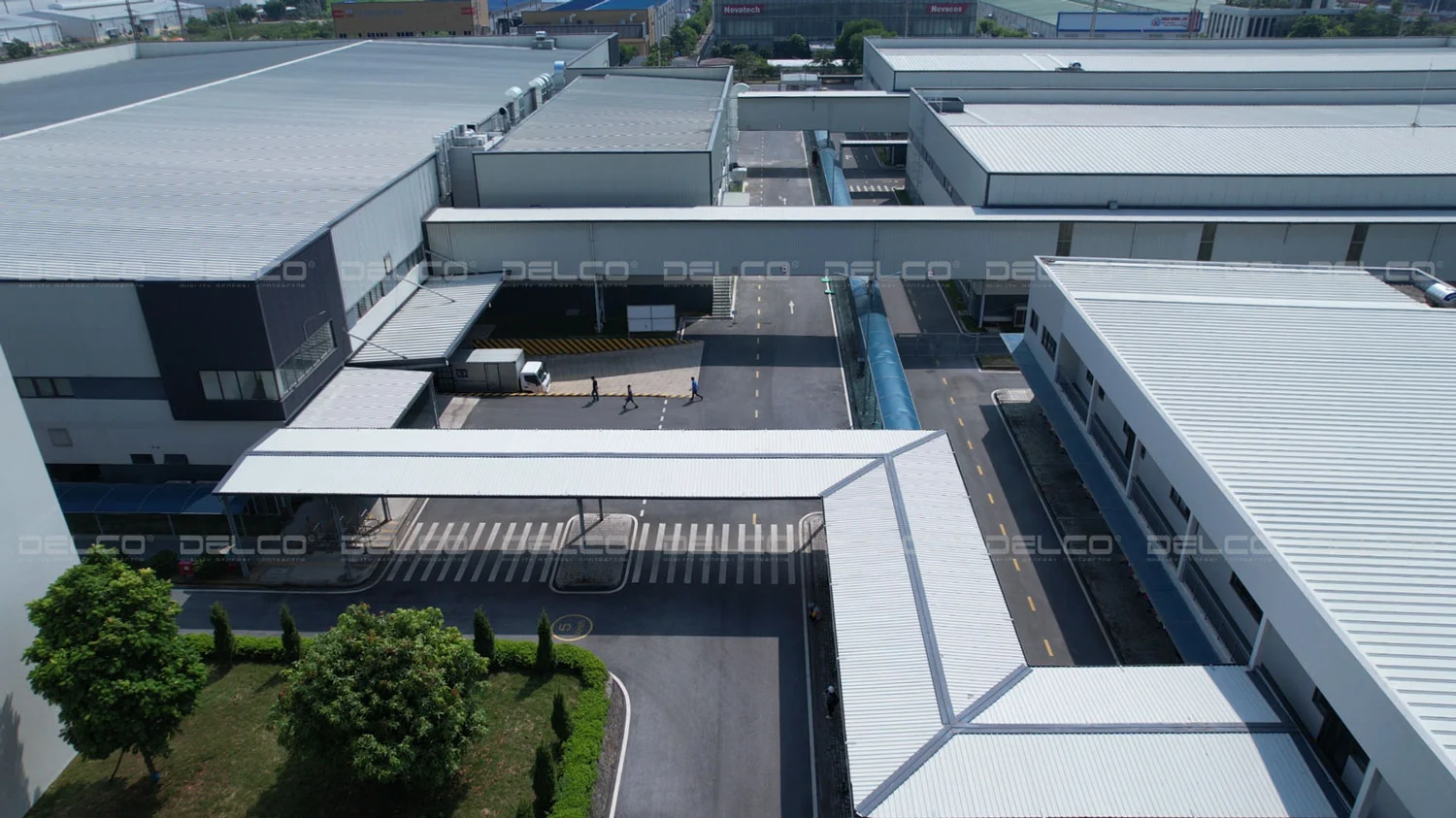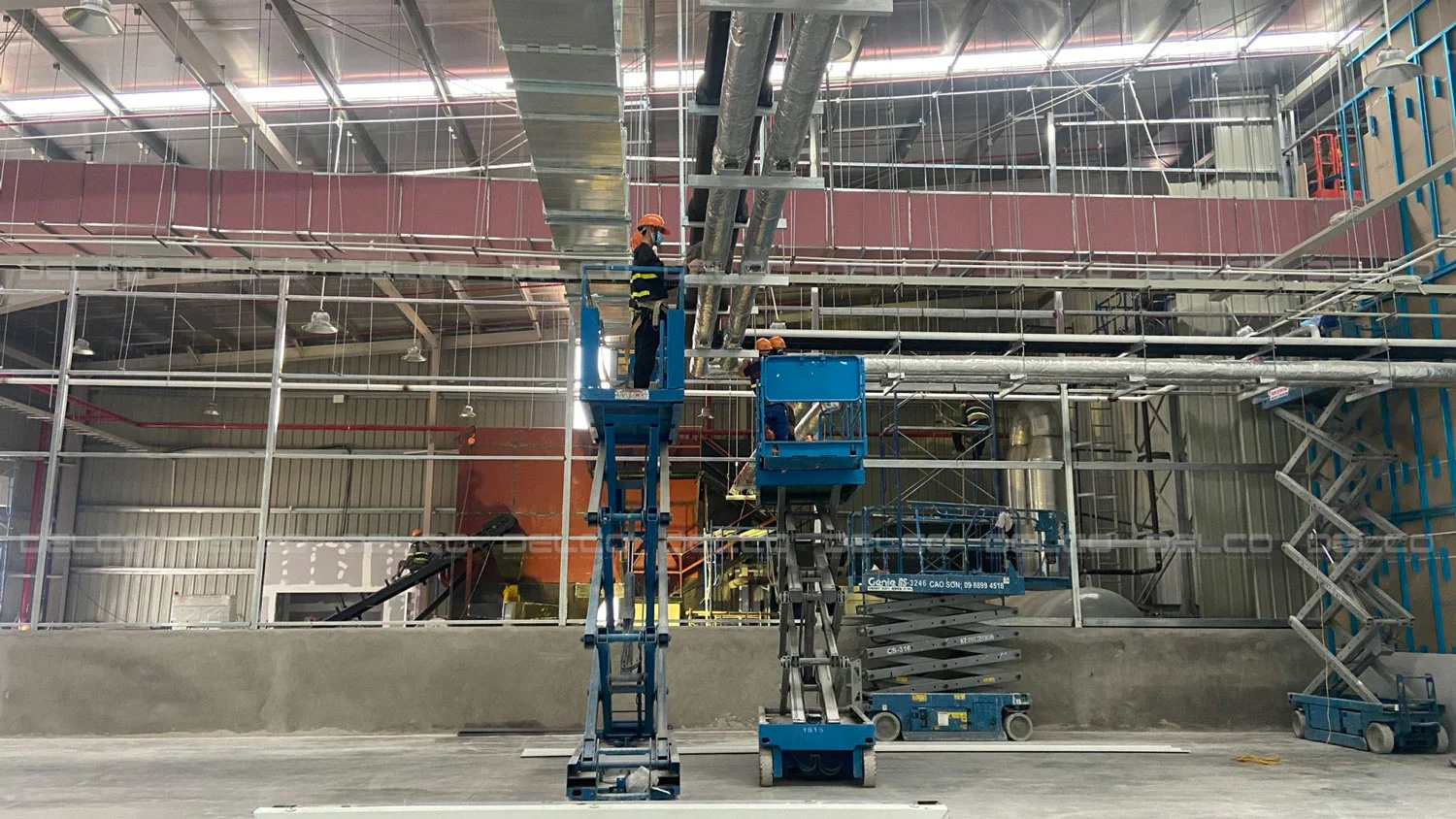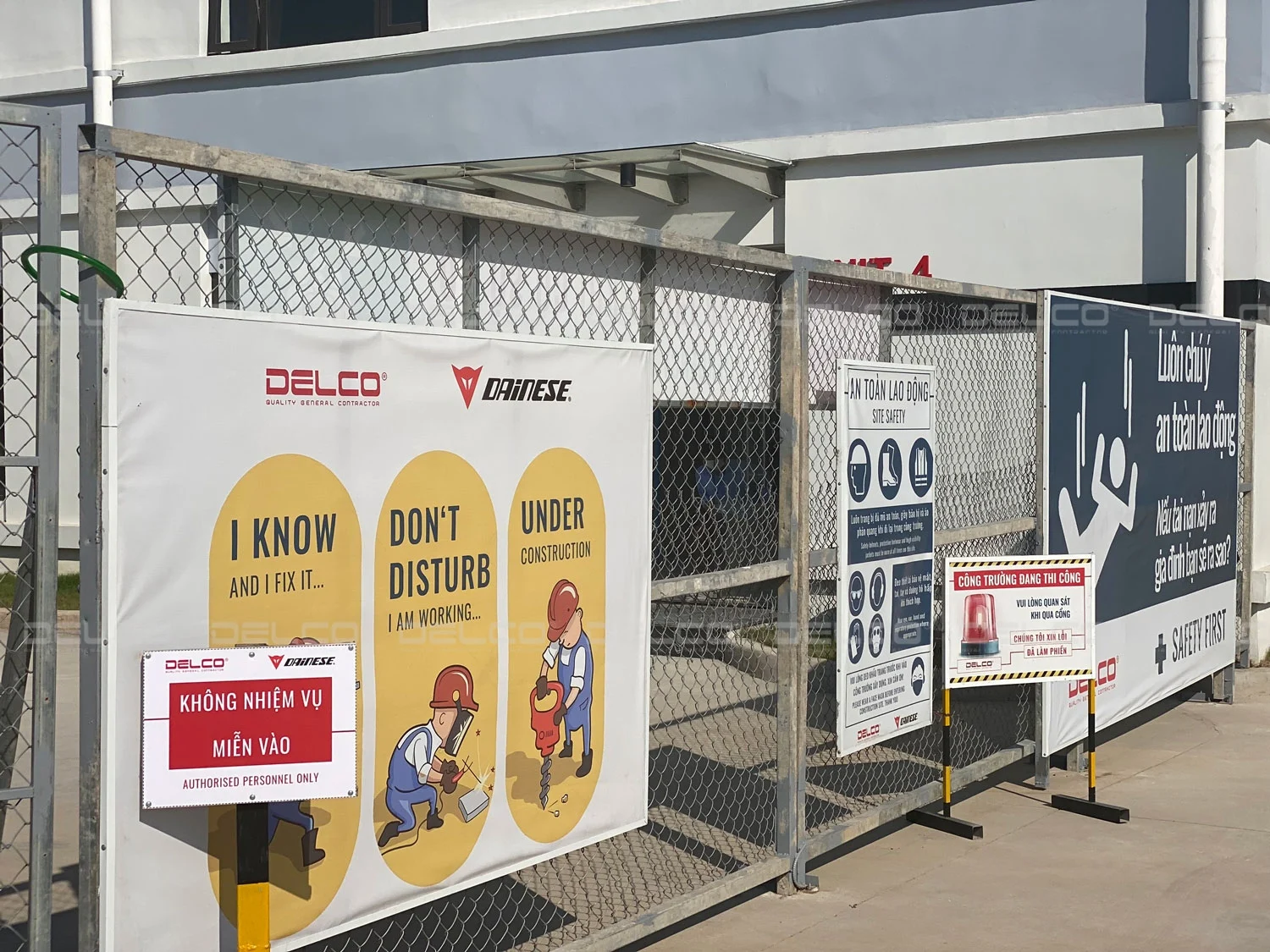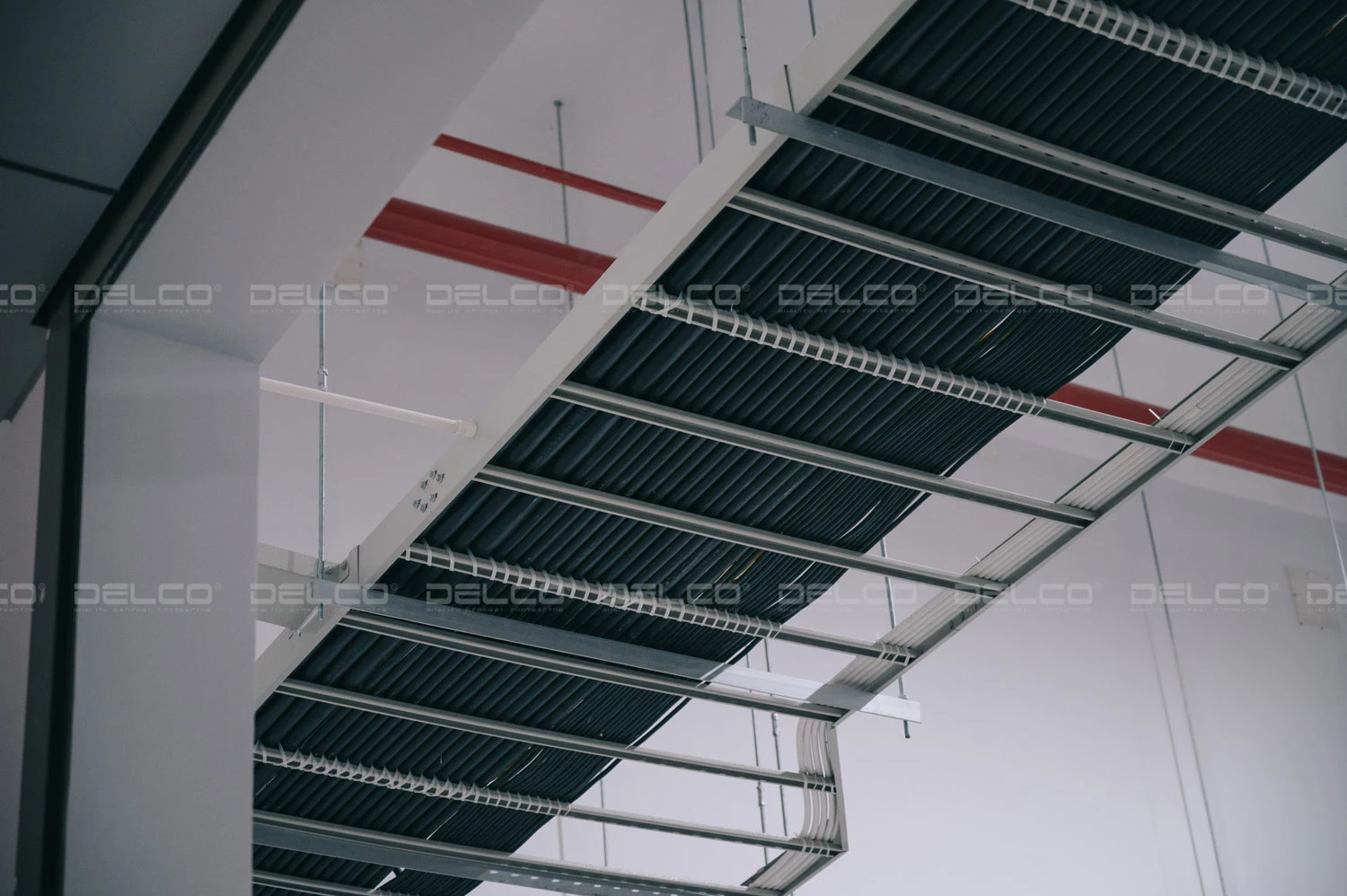Understanding current factory design trends will help investors choose the most appropriate, economical and optimal factory design option as possible.
Multi-storey factory design
Multi-storey factory design is one of the 2024 factory design trends implemented by many businesses to solve the problem of limited construction areas. High-rise factories are considered a smart design solution because businesses can take advantage of the small area to expand the usable area by height, and fully meet their production needs.
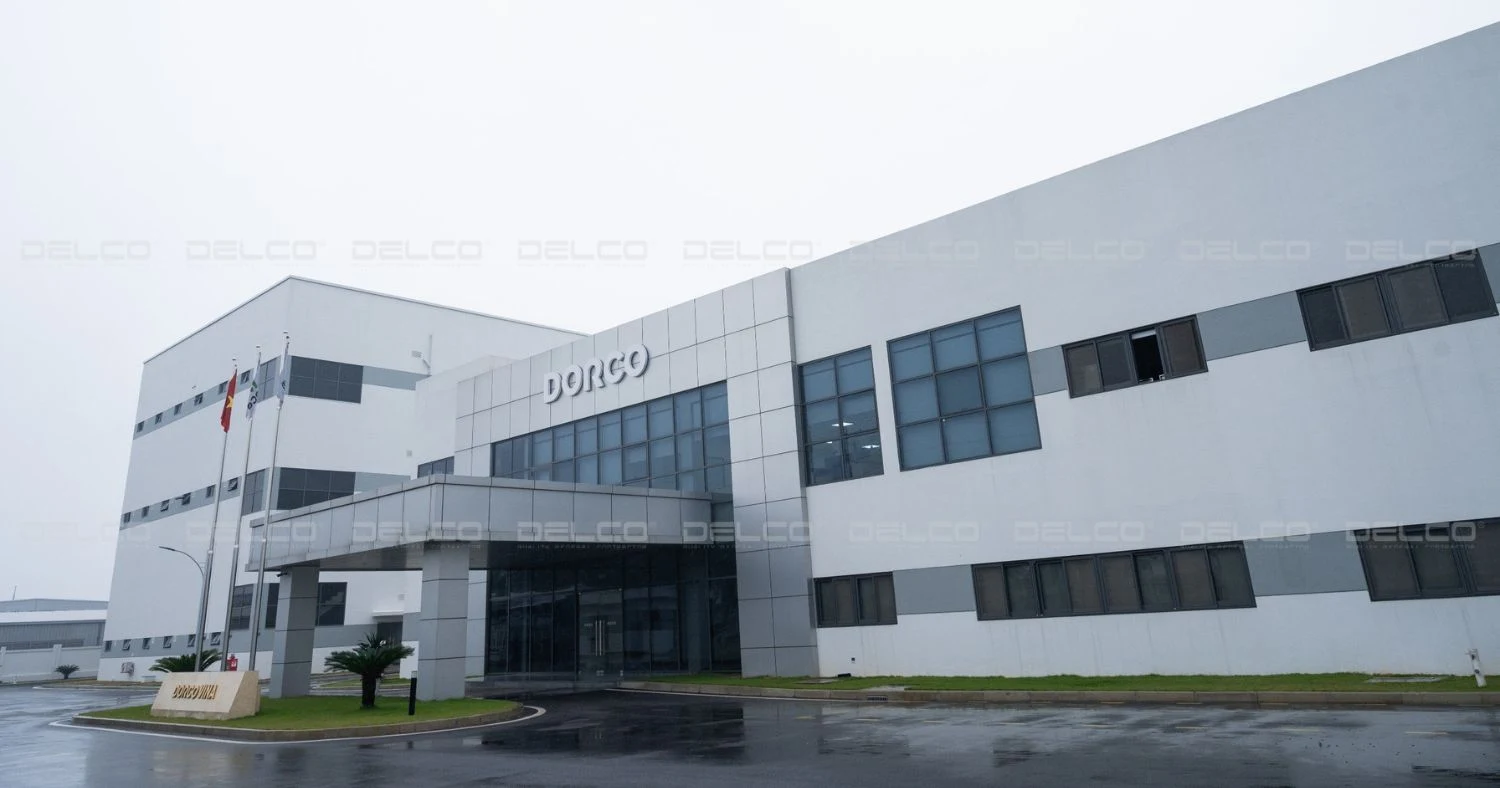
Multi-storey factory cluster at DORCO Living Vina factory, Hoa Mac Industrial Park, Duy Tien, Ha Nam with DELCO as the General Contractor.
Apply large-span structure to optimize factory space
The factory design trend of using pre-engineered buildings with large spans and significantly reduced middle columns to help businesses optimize space effectively. In addition, applying some modern reinforced concrete structures such as flat-slab floors and prestressed floors with the advantage of having large spans without beams thereby helping optimize the clearance height of the factory and ensure the bearing capacity of the project.
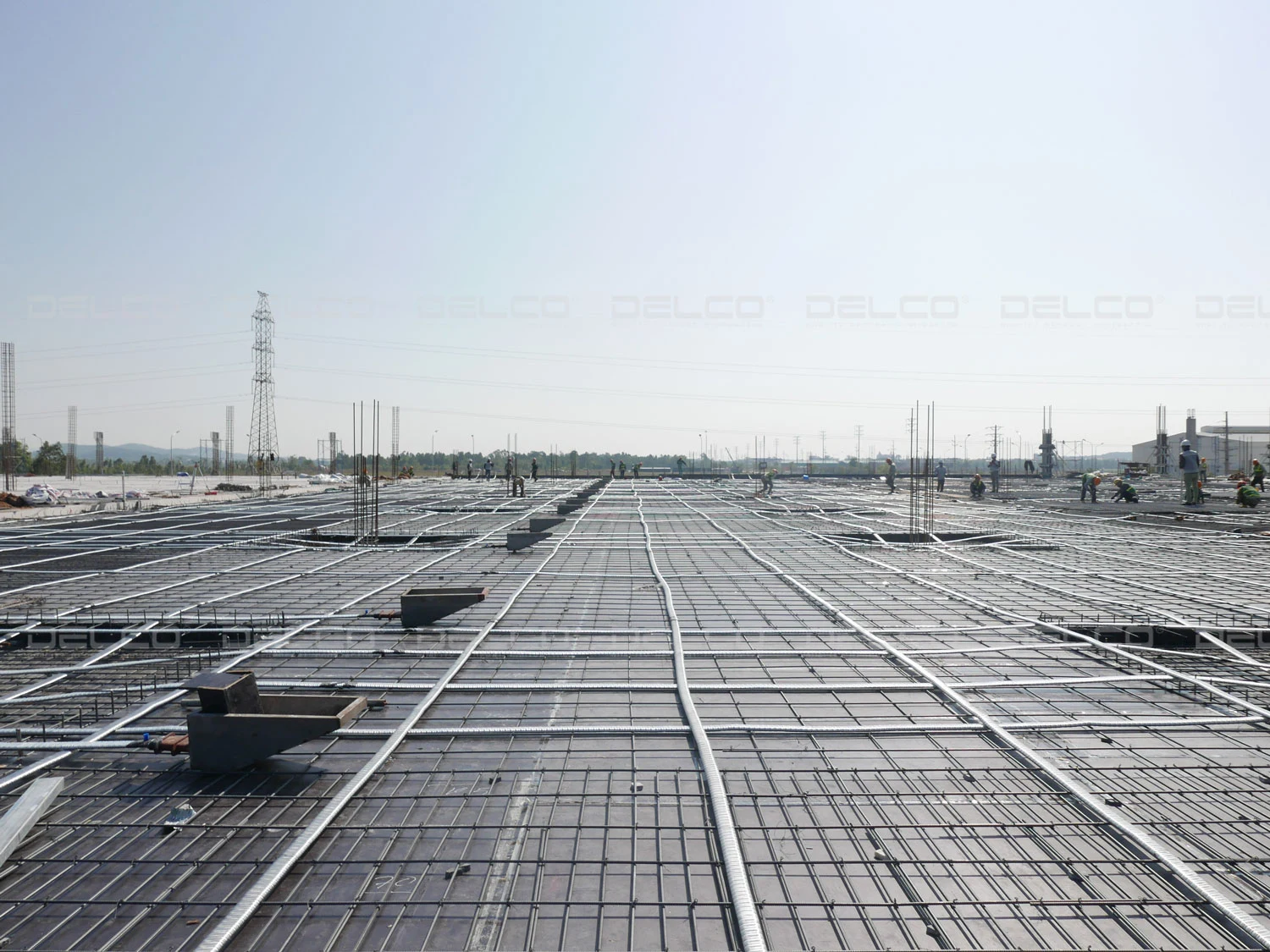
Construction of prestressed floors at Power Plus Technology 2-storey factory, with DELCO as the Design – Build General Contractor
In addition, factory design in recent years has focused on zoning functional areas reasonably to optimize internal traffic, save space to help the production line operate effectively; grouping small functional areas so that large usable regions can be separated; appropriate zoning also helps optimize space effectively.
Apply construction and assembly technology
Pre-engineered buildings have high flexibility, and components can be disassembled, installed and constructed easily. Pre-engineered buildings show significantly faster progress than buildings constructed with traditional brick, mortar, concrete, etc. Above all, the ability to disassemble and relocate the pre-engineered factory also helps businesses easily move or expand the factory whenever needed.
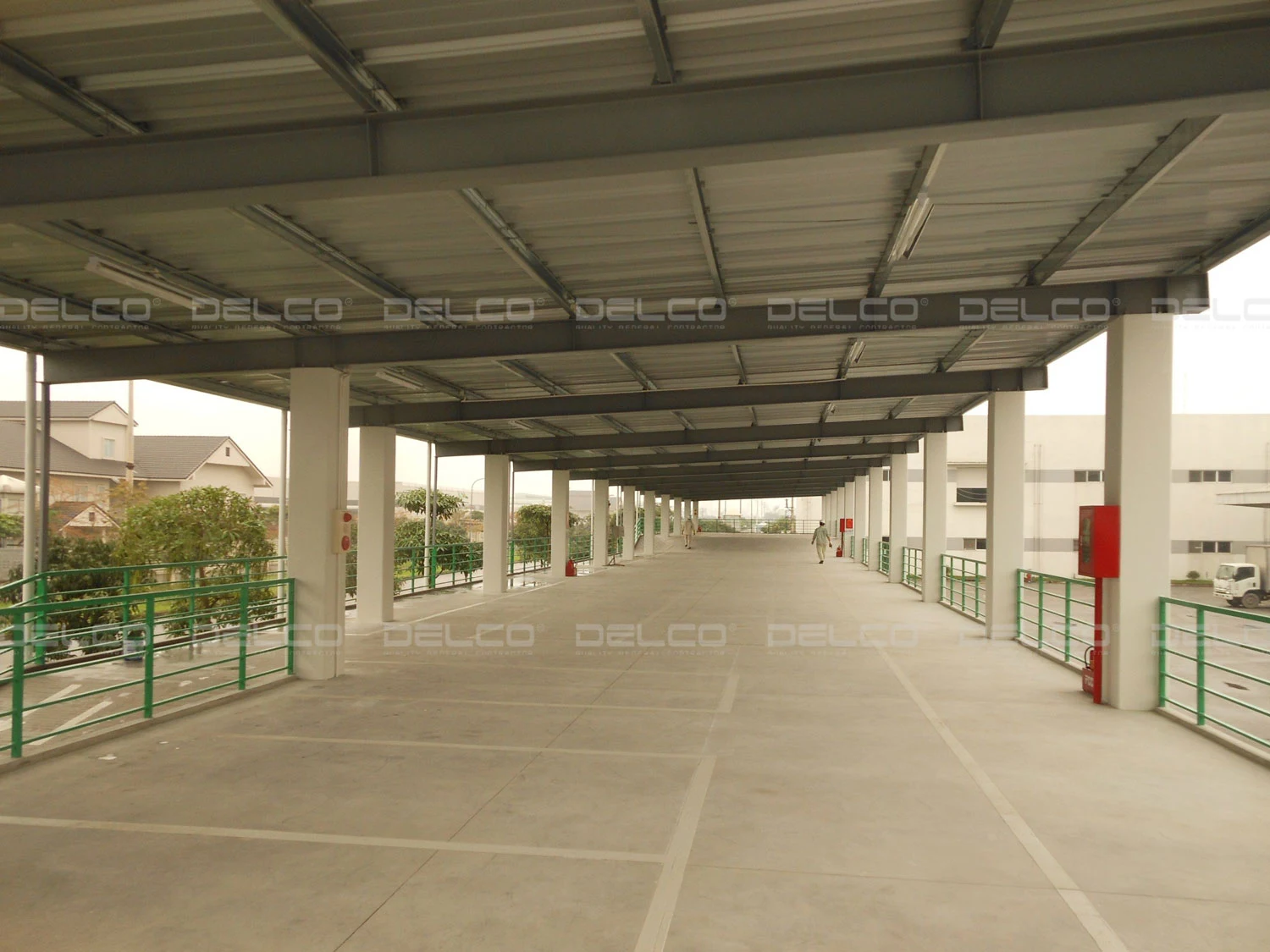
DELCO uses precast concrete to help optimize construction time at the DORCO Living Vina factory renovation project (Pho Noi A Industrial Park, Hung Yen)
In addition, the trend of factory design using precast concrete also helps investors optimize construction progress. Because the product is pre-manufactured, it only needs to be installed without on-site construction, which saves time pouring concrete at the construction site. Above all, precast concrete is produced in a controlled environment so the product has uniform quality, ensuring the standard quality of projects.
Smart integration
Choosing MEP design options with integrated smart factory infrastructure helps businesses easily upgrade to smart factories in the future. This allows the factory to integrate IoT and AI technologies into production and operations management without renovating the construction infrastructure.
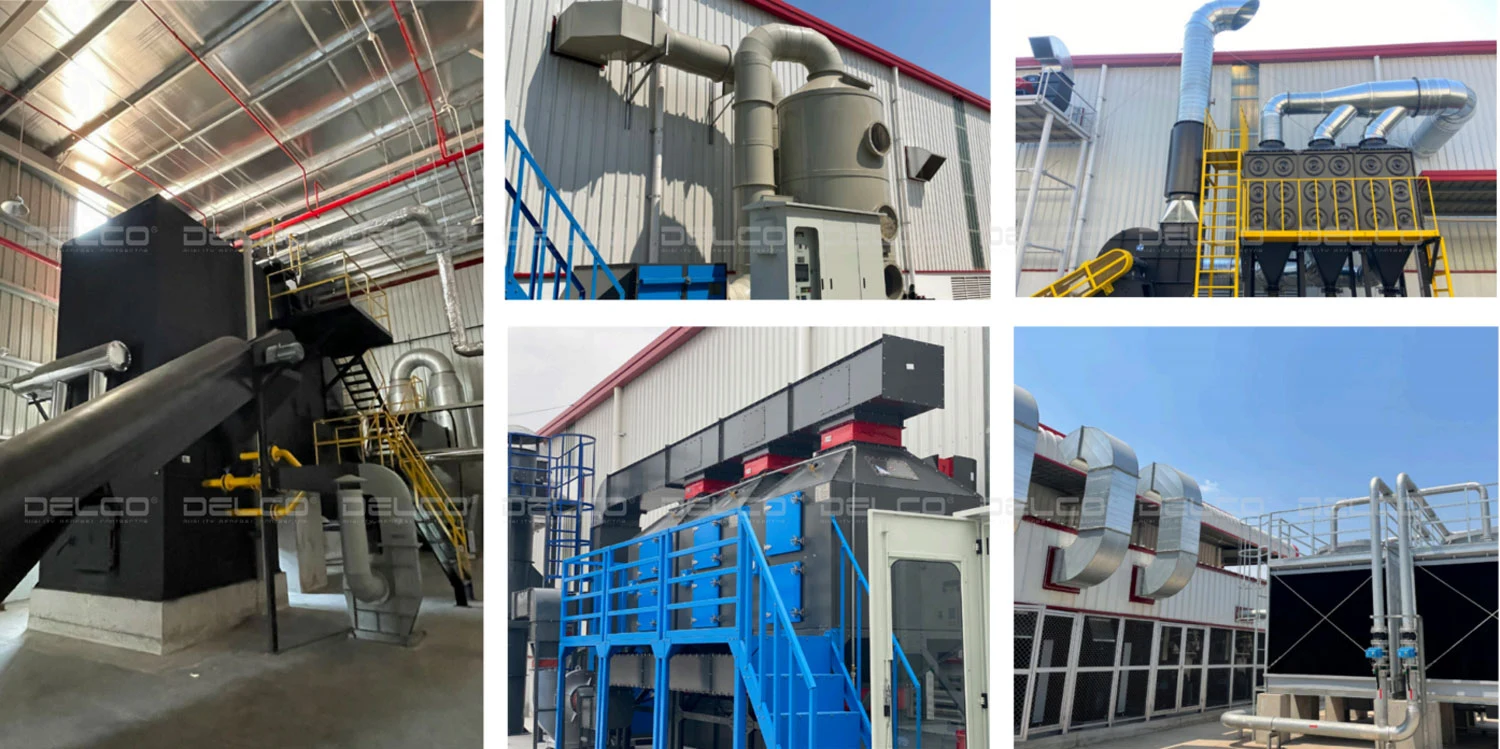
The Chiller system, environmental treatment system, and cooling tower are integrated with smart technology at the DAINESE factory with DELCO as the general contractor for MEP design – construction.
The trend of smart factory design is also attractive to many investors. Factory designs with integrated surveillance camera systems, smart timekeepers, and HVAC systems combined with sensors will help factories manage and monitor factories conveniently.
Green design, saving energy
Factory design trends aimed at sustainability and energy saving are increasingly chosen by many investors. Green factory design not only focuses on sustainable construction measures to reduce waste and carbon emissions into the environment but also considers factors such as energy-saving lighting and ventilation systems.

Factory architecture makes use of natural light at the ANNEX factory office, with DELCO as the General Contractor.
Nowadays, many factories are designed with production systems that use locally sourced or recycled materials to help save raw materials and costs. Design the lighting system by using LED lights and optimizing natural light; the trend of using renewable energy such as solar and wind energy is also applied in many factories to help save electricity effectively. Designing an HVAC system with green refrigerant combined with remote control sensors to improve air quality in the factory is also one of the solutions to help businesses save significant energy and costs.
See more: Integrating IoT technology in factory management
See more: Green factory design trends in Vietnam in 2024

